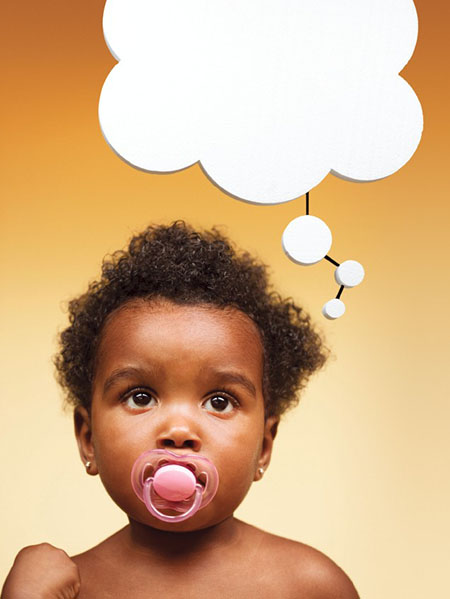
Babies Are Born Scientists
USINFO | 2013-07-17 13:43

But in the past three decades scientists have discovered that even the youngest children know more than we would ever have thought possible. Moreover, studies suggest that children learn about the world in much the same way that scientists do—by conducting experiments, analyzing statistics, and forming intuitive theories of the physical, biological and psychological realms. Since about 2000, researchers have started to understand the underlying computational, evolutionary and neurological mechanisms that underpin these remarkable early abilities. These revolutionary findings not only change our ideas about babies, they give us a fresh perspective on human nature itself.
why were we so wrong about babies for so long? If you look cursorily at children who are four years old and younger (the age range I will discuss in this article), you might indeed conclude that not much is going on. Babies, after all, cannot talk. And even preschoolers are not good at reporting what they think. Ask your average three-year-old an open-ended question, and you are likely to get a beautiful but incomprehensible stream-of-consciousness monologue. Earlier researchers, such as the pioneering Swiss psychologist Jean Piaget, concluded that children’s thought itself was irrational and illogical, egocentric and “precausal”—with no concept of cause and effect.
The new science that began in the late 1970s depends on techniques that look at what babies and young children do instead of just what they say. Babies look longer at novel or unexpected events than at more predictable ones, and experimenters can use this behavior to figure out what babies expect to happen. The strongest results, however, come from studies that observe actions as well: Which objects do babies reach for or crawl to? How do babies and young children imitate the actions of people around them?
Although very young children have a hard time telling us what they think, we can use language in more subtle ways to tease out what they know. For example, Henry Wellman of the University of Michigan at Ann Arbor has analyzed recordings of children’s spontaneous conversations for clues to their thinking. We can give children very focused questions—for instance, asking them to choose between just two alternatives, rather than asking an open-ended question.
In the mid-1980s and through the 1990s, scientists using these techniques discovered that babies already know a great deal about the world around them. That knowledge goes well beyond concrete, here-and-now sensations. Researchers such as Renée Baillargeon of the University of Illinois and Elizabeth S. Spelke of Harvard University found that infants understand fundamental physical relations such as movement trajectories, gravity and containment. They look longer at a toy car appearing to pass through a solid wall than at events that fit basic principles of everyday physics.
By the time they are three or four, children have elementary ideas about biology and a first understanding of growth, inheritance and illness. This early biological understanding reveals that children go beyond superficial perceptual appearances when they reason about objects. Susan A. Gelman, also at Michigan, found that young children believe that animals and plants have an “essence”—an invisible core that stays the same even if outside appearances change.
the University of Washington showed that newborns already understand that people are special and will imitate their facial expressions.
In 1996 Betty Repacholi (now at Washington) and I found that 18-month-olds can understand that I might want one thing, whereas you want another. An experimenter showed 14- and 18-month-olds a bowl of raw broccoli and a bowl of goldfish crackers and then tasted some of each, making either a disgusted face or a happy face. Then she put her hand out and asked, “Could you give me some?” The 18-month-olds gave her broccoli when she acted as if she liked it, even though they would not choose it for themselves. (The 14-month-olds always gave her crackers.) So even at this very young age, children are not completely egocentric—they can take the perspective of another person, at least in a simple way. By age four, their understanding of everyday psychology is even more refined. They can explain, for instance, if a person is acting oddly because he believes something that is not true.
By the end of the 20th century experiments had thus charted impressively abstract and sophisticated knowledge in babies and the equally impressive growth of that knowledge as children Kingget older. Some scientists have argued that babies must be born knowing much of what adults know about how objects and people behave. Undoubtedly, newborns are far from being blank slates, but the changes in children’s knowledge also suggest that they are learning about the world from their experiences.
One of the greatest mysteries of psychology and philosophy is how human beings learn about the world from a confusing mess of sensory data. Over the past decade researchers have begun to understand much more about how babies and young children can learn so much so quickly and accurately. In particular, we have discovered that babies and young children have an extraordinary ability to learn from statistical patterns.
Share this page



















